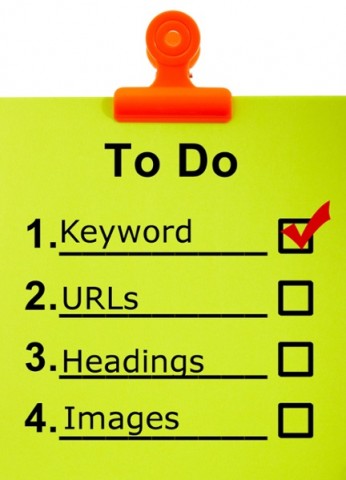On Page SEO Checklist

Every business with a website has the potential to get found by more prospects and customers online through search engine optimization (SEO) and inbound marketing. Today I would like to provide you with an on page SEO checklist.
With so much competition online, it’s more important than ever to make sure that your SEO is as good as it can be and the best way to do that is to optimize your content by having a focus keyword that matches what people are searching for online.
In others words, know what words your customers are typing into a search engine and make sure those words get on the page. This increases the likelihood that you will reach those customers.
The Core Components of On-Page SEO
- Start your title with a keyword – your title tag is the first thing that a search engine sees when it crawls your site, making it the most important on page SEO factor. Titles typically run about 77 characters long, so in general, the closer the keyword is to the beginning, the better off you will be.
- User friendly URLs – have you ever seen a URL that ended in numbers? That would be an example of a non-user-friendly URL. An example of a good URL would be: http://www.printandwebdesigner.com/our-marketing-services and an example of a bad one would be: http://www.printandwebdesigner.com/p?123
- Use images – when using images on your web pages, make sure to fill in the alternative text (Alt) tag and try to use your target keyword. It’s the only way the search engines can “see” your image. Images are also great to engage your target audience with and decreasing your bounce rate.
- Use subheadings – include your focus keyword in at least one subheading and wrap it in an H2 tag.
- Use keyword early in your content – Your keyword should appear in the first 100–150 words of your page content.
- Meta description – while it may not help with your SEO rankings, it will help your target audience choose your site over the others on the search engine results page (SERP).
- Use responsive design – Google started penalizing websites that weren’t mobile friendly in 2015. Besides with so many people using their phones to search with, it just makes sense.
- Use internal and external links – link to older articles when you publish a new one and link to other people’s content. Keep in mind that the site you link to will reflect on you so make it a good one.
- Boost your site speed – you have about 4 seconds to get your page loaded before someone clicks off of your site. Be sure to optimize your images to the correct size before putting it on your site. Images that take a long time to load are a good reason to leave your site. You can check your site’s speed using Google’s PageSpeed Insights.
So there you have it. On page SEO is about picking the best keywords to use on your pages and making it clear to search engines that your page revolves around those keywords. On-page SEO is something that you have control over whereas off-page SEO can a bit trickier.
When you subscribe to the blog, we will send you an e-mail when there are new updates on the site so you wouldn't miss them.
Copyright 2022 | | (336) 684-6505 | Policies




